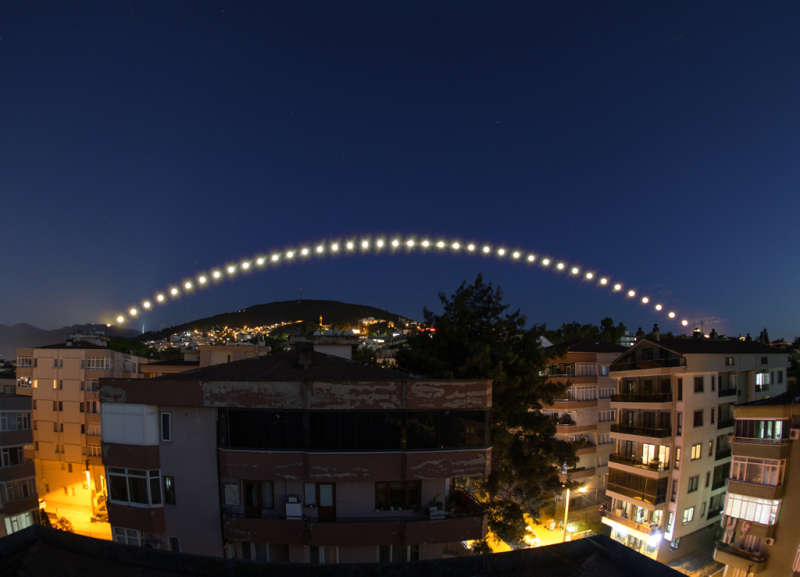
|
Credit & Copyright: Tunc Tezel
(TWAN)
Explanation:
Rising opposite the setting Sun,
June's Full Moon
occurred within about 28 hours of the solstice.
The Moon stays close to the Sun's path along the ecliptic plane
and so while the solstice Sun climbed
high in daytime skies, June's
Full Moon remained low that night
as seen from northern latitudes.
In fact, the Full Moon hugs the horizon in this June 21 rooftop night sky
view from Bursa, Turkey, constructed from exposures made every 10 minutes
between moonrise and moonset.
In 2024 the Moon also reached a
major
lunar standstill,
an extreme in the
monthly north-south
range of moonrise and moonset
caused by the precession of the Moon's orbit over an
18.6 year cycle.
As a result, this June
solstice Full Moon was at its southernmost moonrise and moonset
along
the horizon.
|
January February March April May June July August September October November December |
| ||||||||||||||||||||||||||||||||||||||||||||||||
NASA Web Site Statements, Warnings, and Disclaimers
NASA Official: Jay Norris. Specific rights apply.
A service of: LHEA at NASA / GSFC
& Michigan Tech. U.
Based on Astronomy Picture
Of the Day
